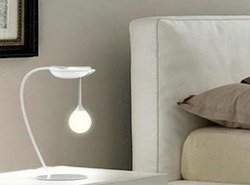 With the gradual maturation of LED lighting applications in public spaces and commercial spaces, plant factories have become a new market for European, American, Japanese, and Taiwanese companies. In particular, Chinese local governments have adopted plant factories as a strategy for their achievements, and they have once again attracted each and every one of them. The factory eagerly tried for local government grants.
With the gradual maturation of LED lighting applications in public spaces and commercial spaces, plant factories have become a new market for European, American, Japanese, and Taiwanese companies. In particular, Chinese local governments have adopted plant factories as a strategy for their achievements, and they have once again attracted each and every one of them. The factory eagerly tried for local government grants. Plant plants with LED lighting applications are not a new concept. The international giants Philips and OSRAM have already rushed into the plant factory market with LED light sources and environmental control advantages as early as 2-3 years ago, and Japan’s development in this area Research has also been going on for some time. LEDinside pointed out that with the gradual maturation of LED lighting applications in public spaces and commercial spaces, plant factories have become a new market for European, American, Japanese, and Taiwanese companies. In particular, Chinese local governments have adopted plant factories as a strategy for their bright performance. Once again, the factories are eager to try and win local government subsidies.
Plant plant technology benefits from LED lighting technology. The development of LED lighting technology has become more mature than ever in 2012 and 2012. In recent years, it has also begun to introduce agricultural lighting applications. Plant plants that use LED light sources and environmental control characteristics have become The niche market that major manufacturers are eager to enter, combined with LED lighting will shorten the harvest time of crops, plants or flowers, and appropriate environmental control will not only prevent pests, but also avoid the use of pesticides or reduce pesticides. Use, check for food safety, also increase the added value of agricultural products. The concept-based niche of plant factories will have the opportunity to bring new solutions to many agricultural issues such as the denseness and pollution of land. In particular, the amount of electricity used by LED lighting can be lower than traditional light sources for fluorescent lamps and halogen lamps for agricultural plants, and it is relatively more able to demonstrate its economic benefits.
The application of plant factories in China has also gradually expanded in recent years. It has also attracted both sides of the Taiwan Strait, as well as overseas LED manufacturers to actively cut into this application. The LED factories include Jingdian, Fuyuan, New Century, Guanghan, Yiguang, Dongbei. Both are keen to cut into this niche market, and each has a corresponding light source application solution.
China's mainland market has subsidies for business opportunities?
In the vast Chinese market, it is expected that the benefits of using plant factories will be staggering. As a result, a number of early-stage enterprises are planning to occupy the beach. According to industry sources in the Chinese market, Chinese local governments have a positive attitude toward plant factories. Some local governments have already cooperated with policy instructions. To promote plant factories as a highlight of their achievements, therefore, whether it is LED light source factory, or the entire plant export manufacturers, but also want to follow the pace of local government development, to standard, special project projects, and actively cut into the Chinese plant factory market, Although the construction of Chinese plant factories is still dominated by policies, rather than capacity considerations, the active steps of local governments also allow companies to smell subsidies for business opportunities. In contrast to the Chinese government's previous support in the MOCVD machine field, it was impressive and it made it difficult to overlook the formation of this wave of subsidies. It is not only the cross-strait industry, including the global LED giants, that took stock of this opportunity. With Japanese manufacturers, traders want to cut in advance.
In the development of cross-strait LED industry, Taiwan’s related industries are making rapid progress. In 2013, the plant factory became one of the themes of “2013 Taipei International Photoelectricity Week†held in Taipei this year. There are quite a few LED manufacturers and plant factories. The participation of industry and agriculture-related companies shows that the market acceptance of this particular application has significantly increased. The development of plant factories in Taiwan's domestic market is currently being actively promoted by the LED application industry of agriculture, forestry, and animal husbandry. The alliance will adopt cooperation demonstration mode with operators in 2013 to expand the acceptance and penetration of LED lighting, in addition to the upcoming Photoelectric Week. In addition to the plant plant special exhibition area, the alliance will also hold a field visit to the demonstration plant factory in June to allow outsiders to experience the achievements of plant factories in Taiwan.
Bi Directions Thyristor (Triac)
Bi Directions Thyristor (Triac) is equivalent to the antiparallel connection of two unidirectional thyristors, but only one control pole.
Bidirectional thyristors are made of N-P-N-P-N five-layer semiconductor materials, and three electrodes are also derived from the outside. Its structure is shown in the figure. Bi-directional thyristor volt-ampere characteristic curve Since the forward and reverse characteristics of the bidirectional thyristor are symmetrical, it can be turned on in any direction and is an ideal AC switching device.
Bi Directions Thyristor,Electronic Components Triac,Power Thyristor For Inverter,Silicon Power Bipolar Transistors
YANGZHOU POSITIONING TECH CO., LTD. , https://www.cnpositioning.com